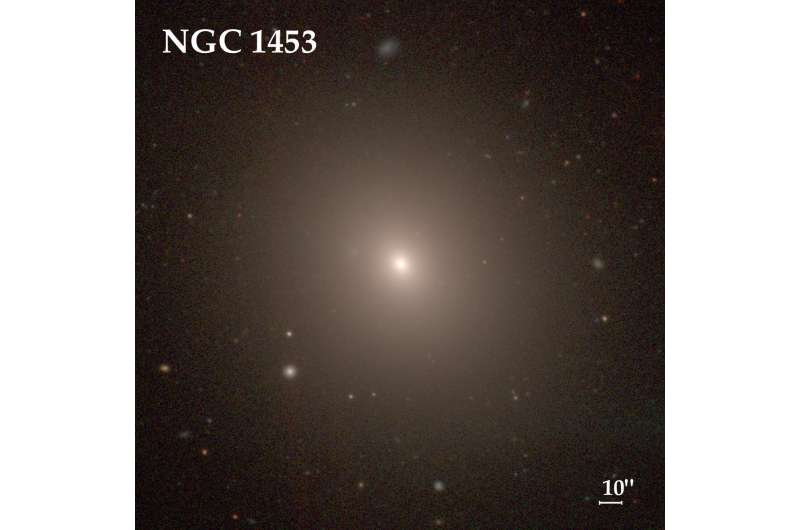How fast is the universe expanding? Galaxies provide one answer.

Determining how rapidly the universe is expanding is key to understanding our cosmic fate, but with more precise data has come a conundrum: Estimates based on measurements within our local universe don’t agree with extrapolations from the era shortly after the Big Bang 13.8 billion years ago.
A new estimate of the local expansion rate—the Hubble constant, or H0 (H-naught)—reinforces that discrepancy.
Using a relatively new and potentially more precise technique for measuring cosmic distances, which employs the average stellar brightness within giant elliptical galaxies as a rung on the distance ladder, astronomers calculate a rate—73.3 kilometers per second per megaparsec, give or take 2.5 km/sec/Mpc—that lies in the middle of three other good estimates, including the gold standard estimate from Type Ia supernovae. This means that for every megaparsec—3.3 million light years, or 3 billion trillion kilometers—from Earth, the universe is expanding an extra 73.3 ±2.5 kilometers per second. The average from the three other techniques is 73.5 ±1.4 km/sec/Mpc.
Perplexingly, estimates of the local expansion rate based on measured fluctuations in the cosmic microwave background and, independently, fluctuations in the density of normal matter in the early universe (baryon acoustic oscillations), give a very different answer: 67.4 ±0.5 km/sec/Mpc.
Astronomers are understandably concerned about this mismatch, because the expansion rate is a critical parameter in understanding the physics and evolution of the universe and is key to understanding dark energy—which accelerates the rate of expansion of the universe and thus causes the Hubble constant to change more rapidly than expected with increasing distance from Earth. Dark energy comprises about two-thirds of the mass and energy in the universe, but is still a mystery.
For the new estimate, astronomers measured fluctuations in the surface brightness of 63 giant elliptical galaxies to determine the distance and plotted distance against velocity for each to obtain H0. The surface brightness fluctuation (SBF) technique is independent of other techniques and has the potential to provide more precise distance estimates than other methods within about 100 Mpc of Earth, or 330 million light years. The 63 galaxies in the sample are at distances ranging from 15 to 99 Mpc, looking back in time a mere fraction of the age of the universe.
“For measuring distances to galaxies out to 100 megaparsecs, this is a fantastic method,” said cosmologist Chung-Pei Ma, the Judy Chandler Webb Professor in the Physical Sciences at the University of California, Berkeley, and professor of astronomy and physics. “This is the first paper that assembles a large, homogeneous set of data, on 63 galaxies, for the goal of studying H-naught using the SBF method.”
Ma leads the MASSIVE survey of local galaxies, which provided data for 43 of the galaxies—two-thirds of those employed in the new analysis.
The data on these 63 galaxies was assembled and analyzed by John Blakeslee, an astronomer with the National Science Foundation’s NOIRLab. He is first author of a paper now accepted for publication in The Astrophysical Journal that he co-authored with colleague Joseph Jensen of Utah Valley University in Orem. Blakeslee, who heads the science staff that support NSF’s optical and infrared observatories, is a pioneer in using SBF to measure distances to galaxies, and Jensen was one of the first to apply the method at infrared wavelengths. The two worked closely with Ma on the analysis.
“The whole story of astronomy is, in a sense, the effort to understand the absolute scale of the universe, which then tells us about the physics,” Blakeslee said, harkening back to James Cook’s voyage to Tahiti in 1769 to measure a transit of Venus so that scientists could calculate the true size of the solar system. “The SBF method is more broadly applicable to the general population of evolved galaxies in the local universe, and certainly if we get enough galaxies with the James Webb Space…
Read More: How fast is the universe expanding? Galaxies provide one answer.

